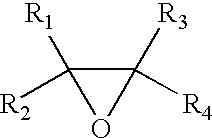Electrostatic dissipating polymeric multi-layer article or laminate
a multi-layer article and polymer technology, applied in the direction of synthetic resin layered products, transportation and packaging, chemistry apparatus and processes, etc., can solve the problems of unsatisfactory accumulation of static charge on the surface of plastics, damage to sensitive components or articles, and static charge on these materials can discharge very quickly, so as to enhance the protection of sensitive devices, improve the effect of charge decay and reduce resistan
- Summary
- Abstract
- Description
- Claims
- Application Information
AI Technical Summary
Benefits of technology
Problems solved by technology
Method used
Image
Examples
example 1
Material A is a melt blend of inherently dissipative polymer with an ABS copolymer. The blend composition by weight is 80% ABS and 20% Stat-Rite C-2400 polyurethane based inherently dissipative polymer.
Material B is a conductive carbon black filled polycarbonate available from DSM of the Netherlands. Materials A and B were each extruded into 30 mil monolayer sheets. Various properties of the extruded sheets were tested and are listed in Table 1.
To make the multi-layer laminate, materials A and B were coextruded into a 30 mil ABA sheet comprising 10 / 80 / 10 layer ratios wherein two overlayers of material A surround a core layer of material B. The various properties of the multi-layer laminate are also shown in Table 1.
The multi-layer laminate (ABA) has surface resistivity in the preferred range, exhibiting a static dissipative surface as opposed to the non-preferred, conductive surface exhibited by material B. The multi-layer shows an order of magnitude lower resistivity and static dec...
example 2
Material A is a melt blend of inherently dissipative polymer with a high impact polystyrene. The blend composition by weight is 75% HIPS and 25% Stat-Rite C-2400 polyurethane based inherently dissipative polymer.
Material B is a sixteen weight percent conductive carbon black filled HIPS available from Noveon Inc. of Cleveland, Ohio. Materials A and B were each extruded into 30 mil monolayer sheets. Various properties of the extruded sheets were tested and are listed in Table 2.
To make the multi-layer laminate, materials A and B were coextruded into a 30 mil ABA sheet comprising 10 / 80 / 10 layer ratios wherein two overlayers of material A surround a core layer of material B. The various properties of the multi-layer laminate are also shown in Table 2.
The multi-layer laminate (ABA) has surface resistivity in the preferred range, exhibiting a static dissipative surface as opposed to the non-preferred, conductive surface exhibited by material B. The multi-layer shows greater than an order ...
example 3
Material A is a melt blend of inherently dissipative polymer with PETG. This material is Stat-Rite S680 and is commercially available from Noveon Inc. of Cleveland, Ohio.
Material B is a carbon black filled PETG, Eastastat GSP32. It is commercially available from Eastman Chemical of Kingsport, Tenn. Materials A and B were each extruded into 24 mil monolayer sheets. Various properties of the extruded sheets were tested and are listed in Table 3.
To make the multi-layer laminate, materials A and B were coextruded into a 30 mil ABA sheet comprising 10 / 80 / 10 layer ratios wherein two overlayers of material A surround a core layer of material B. The various properties of the multi-layer laminate are also shown in Table 3.
The multi-layer laminate (ABA) has surface resistivity in the preferred range, exhibiting a static dissipative surface as opposed to the non-preferred, conductive surface exhibited by material B. The multi-layer shows lower resistivity compared to the monolayer of material ...
PUM
| Property | Measurement | Unit |
|---|---|---|
| thickness | aaaaa | aaaaa |
| thickness | aaaaa | aaaaa |
| thickness | aaaaa | aaaaa |
Abstract
Description
Claims
Application Information
 Login to View More
Login to View More - R&D
- Intellectual Property
- Life Sciences
- Materials
- Tech Scout
- Unparalleled Data Quality
- Higher Quality Content
- 60% Fewer Hallucinations
Browse by: Latest US Patents, China's latest patents, Technical Efficacy Thesaurus, Application Domain, Technology Topic, Popular Technical Reports.
© 2025 PatSnap. All rights reserved.Legal|Privacy policy|Modern Slavery Act Transparency Statement|Sitemap|About US| Contact US: help@patsnap.com



